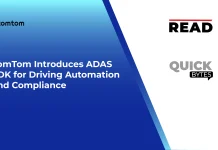The MIPI Alliance, an international organization that develops interface specifications for mobile and mobile-influenced industries, announced the release of the MIPI Camera Security Framework, which defines a flexible approach to add end-to-end security to automotive applications that leverage the MIPI Camera Serial Interface 2 (CSI-2) interface specification.
Because of the safety-critical role of image sensors in advanced driver-assistance systems (ADAS) and autonomous driving systems (ADS), protecting image-sensor data against cybersecurity risks is paramount to the security of the overall vehicle. Advanced image sensor-enabled systems must be secured from cybersecurity risks such as installation of illegitimate or substandard image sensor components, malicious manipulation of sensor data and privacy violations from unauthorized access to images and image-related metadata.
Uniquely effective in both implementation and operational flexibility, the new MIPI Camera Security Framework enables authentication of system components, data integrity protection and data encryption. It provides implementers with a choice of security protocols, cipher suites, data integrity tag modes and security controls, which together provide a high degree of flexibility to balance required security levels against processing efficiency, implementation complexity, thermal regulation and power consumption.
Also Read: Keysight and ADI Partner to Develop GMSLTM Test Methodology
While other embedded interface security methods protect only the link layer, the MIPI Camera Security Framework delivers application-level protection from “silicon to silicon” —the security transcends all link-layer components to provide end-to-end CSI-2 protection from the source of sensor data in sensor silicon to the ultimate sink of that data in system-on-chip (SoC) silicon.
In this way, end-to-end CSI-2 protection is guaranteed, irrespective of the underlying communication network topology, providing complete flexibility for developers to leverage any combination of bridges, aggregators, forwarding elements and other underlying network components to achieve the most efficient solution for their particular application.
The MIPI Camera Security Framework also allows highly granular security control over the different segments of the CSI-2 image frame to enable a “sliding scale” of security levels. At the highest security level, full data integrity and encryption are applied to the whole image frame; whereas, at partial integrity levels, integrity protection is applied to a subset of data within an image frame. At the lowest security level, no data integrity is applied to the image data. The level of security is configurable on a frame-by-frame basis.
Although the framework has been designed for protection of automotive data streams, it can be applied to Internet of Things (IoT), industrial and other use cases that leverage CSI-2-based image sensors for machine-vision applications.
The MIPI Camera Security Framework currently consists of three new specifications, with a fourth to be added in the coming months:
- MIPI Camera Service Extensions (MIPI CSE) v2.0, a companion specification to MIPI CSI-2, defines security services to enable data integrity protection and optional encryption of CSI-2 data (in addition to the functional safety services provided in CSE v1.0).
- MIPI Camera Security v1.0, which defines system security management of MIPI CSE and the upcoming MIPI CCISE, leveraging the Distributed Management Task Force (DMTF) Security Protocol Data Model (SPDM) for authentication of system components.
SOURCE: Businesswire




